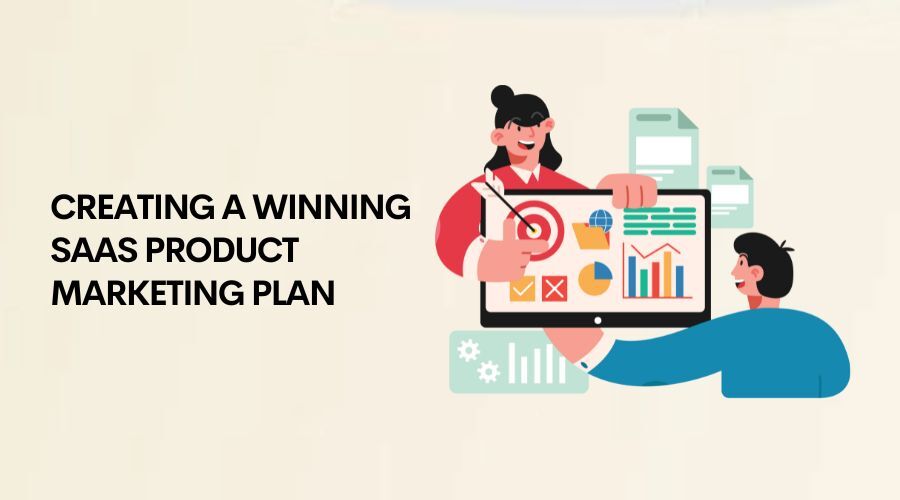Creating a winning SaaS product marketing plan can be overwhelming.
One wrong move, and you likely won’t reach your target audience and generate leads.
So, if crafting a winning SaaS marketing strategy is stressing you out, don’t worry. We’ve got you covered.
In this post, we’ll show you a step-by-step guide on how to build a strong marketing plan from the ground up.
Let’s go ahead and jump right into it.
1. Define Your Ideal Buyer Persona
A buyer persona is when SaaS marketers use data and research to come up with a fictional representation of their ideal customer.
When you have one for your micro-SaaS, you can then put all your marketing efforts on attracting this ideal customer to your service.
1. Define your ideal customer types

No matter what type of online business you have, the types of customers you’ll encounter are mostly the same.
There’s the innovator, who likes being one of the first to gain access to a product or service.
Then you have those who put quality over everything else. They’re willing to pay higher prices so long as they’re getting the best of the best.
Next, you have the exact opposite: people who’d risk product quality so long as they think they’re getting a bargain.
You’ll also find people who are impulsive buyers and others who would buy anything if it comes from brands they support.
Knowing which of these customer types you’re trying to target will narrow down your strategy.
2. Gather demographic information

Any SaaS company will need demographic information to understand its audience.
This includes data such as:
- Age;
- Gender;
- Income;
- Education level;
- Job titles;
- Industries;
- Locations, and;
- Company size.
Use this to help your sales team narrow down its search for potential customers.
This will help you create advertising opportunities that better fit your leads.
You’ll also be able to find the appropriate marketing channels for your campaign.
To find this information, you can start by having users answer surveys and conducting interviews.
If you have access to your site’s Google Analytics, you can organize who your visitors are according to their demographics.
Researching the customers of your competitors can also reveal who you should target in your marketing strategy.
3. Identify pain points and challenges
If people are willing to pay for a solution, that means they’re trying to address the pain points and challenges they have.
To this end, understanding the issues your potential SaaS users have can help you deliver the right message to them.
4. Consider their buying behavior

Having gathered information about your ideal customers, you can now take a look at their buying behavior when making your SaaS marketing plan.
Aside from highlighting the aspects of your micro-SaaS that hit on their pain points, consider your users’ budget and decision-making process as well.
What’s their income level? What pricing plans resonate with them within that range?
Testimonials from your existing customers are also a great way to vouch for your product’s effectiveness.
In fact, you can use them to spread the word about your brand.
2. Conduct Market Research
Market research lets you know what the competitive landscape is like for your micro-SaaS niche and discover what users need and prefer.
It’s a step you shouldn’t skip if you’re looking for customer success.
In this section, you’ll learn everything there is to know about conducting market research for SaaS companies.
1. Determine your research objectives

Lay out what you want to learn from your market research and list down all the questions you want to know.
Here are some questions you can include:
- How big is the demand for your SaaS solution?
- What features do paying customers expect from a similar service?
- How much are people willing to pay for it?
- Who are the biggest competitors in your space?
Asking questions like these should give you direction as you do your market research.
It’ll also give you some idea of how long your research is going to take.
2. Choose your research methodology
One important thing you have to know is that the bulk of your research will be about gathering data.
Luckily, there are several ways you can go about it.
For one, you can conduct focus group discussions, where a moderator gets to control the flow of the discussion in an intimate setting.
Note, though, that there should only be a few participants at a time for it to be effective.
You can also do one-on-one interviews, though it will take you longer to generate sufficient data for your research.
However, not all SaaS companies have the time and resources to do both.
If you’re in the same boat, you can do online surveys instead. Not only are these cheaper, but you’ll also be able to get data faster.
3. Develop your research instrument
Developing your research instrument means preparing the questions you’ll be asking your respondents.
Here, you’ll have to look back to your research objectives. What do you need to know to get closer to your goals?
If you’ve never developed questions specifically for market research, consider asking for help or guidance from someone who has.
Your research instrument has to be clear, concise, and unbiased.
You may need a separate set of eyes to make sure you stay within these parameters.
4. Collect and analyze your data

Once you have a solid research instrument, you can now collect and analyze data.
There are several steps to doing this.
For one, you must enter all feedback from respondents in a repository.
The simplest way of doing that is to tabulate the results in a spreadsheet.
If you’re using a third-party tool, you might have access to a reporting feature that can automatically compile all answers.
Next, you’ll have to look for inconsistencies and missing data points. You can do this by searching for trends and patterns.
SaaS marketers and marketing agencies will have different approaches to analyzing data sets.
You might want to consult with one to see which makes the most sense based on your objectives.
3. Set Your Marketing Goals
The marketing goals of every SaaS and micro-SaaS company are mostly the same.
Generally, they want to generate leads, convert those leads into paying customers, increase the average revenue of existing customers, improve customer retention, and decrease the number of unsubscriptions.
But what do you have to do to achieve all these goals?
We’ll explain below.
1. Identify your KPIs

KPIs are metrics that SaaS companies use to measure the success of their marketing campaign.
Here are just some of the most used KPIs in SaaS marketing:
- Site traffic — How many site visitors you get in a given period
- Customer acquisition cost — How much you spend in acquiring a new customer
- Retention — How many customers stay as your subscribers
- Conversion rate — How many users become your subscribers
- Daily active users — How many customers use your SaaS every day
- Monthly recurring revenue — How much you earn from paying customers in a month
- Annual recurring income — How much you earn from paying customers in a fiscal year
You can use any or all of them, depending on your goals as a SaaS company.
2. Establish a timeline
Set a target date when you expect to achieve your goals and see results. Even better, create a detailed timeline to visualize your progress.
A SaaS marketing team will typically have daily, weekly, monthly, and yearly goals, see if there’s been enough progress, and make changes as needed.
It’s a good idea for you to always refer to your timeline when setting goals.
That way, chances are high you’ll always hit your marketing goals within the period you allotted.
Remember, though, that it’s just as important to make sure that your deadlines are reasonable for you and your team.
3. Assign responsibility

If you have a SaaS, executing a huge marketing plan means having to work with multiple teams. Otherwise, it’s going to be hard for you.
To this end, you’ll have to learn how to assign roles and responsibilities.
Assign people to be in charge of specific marketing goals.
Meet with them regularly to discuss roadblocks they may be facing and compliment them whenever they do something right.
There are tools available that can help you manage a large team.
A simple task management app like Orrderly, for example, can help ease the burden of communicating with so many people.
4. Develop Your Unique Value Proposition
In simpler terms, a unique value proposition (UVP) is what makes your SaaS product stand out from competing businesses.
It is typically the focal point of SaaS marketing campaigns and answers the question of why potential customers should subscribe to your service.
Market research and buyer persona are the keys to finding your unique value proposition.
What you’ll learn from these phases will help you see which messaging appeals most to your target audience and separates you from your competitors.
5. Create a Marketing Strategy
At this point, you should have everything you need to lay out your marketing strategy.
Here’s what you need to do to that end:
1. Choose your marketing channels

This is the point where you finalize the list of marketing channels you’ll use to find customers.
One channel you can use is email marketing for your micro-SaaS.
But if that’ll be your primary channel, then you’ll need to put more effort into capturing leads.
On the other hand, if you decide that social media is where your target audience is, your marketing team should be ready to create content on those platforms.
Companies that have a big marketing budget will sometimes include influencer marketing.
This is where you reach out to industry experts with a huge following and have them speak about your product.
Of course, you can’t go wrong with SEO either. Asking your team to optimize your landing pages can help you rank on top of search so more people can find you.
2. Create a content marketing plan

There’s no shortage of content that you could publish to promote your SaaS product.
In fact, one of the basic types you can create are blog posts.
If you don’t have a team of writers just yet, you can hire freelancers or blog writing companies to do all the work.
Make sure to optimize the content using tools like GrowthBar to help it generate more organic traffic.
Later on, you can expand to sharing video content across multiple platforms.
Even short-form videos can do wonders for your SaaS business.
Think tutorials, product showcases, walkthroughs, and onboarding guides.
SaaS customers also like reading case studies, whitepapers, and eBooks, so you could also try that.
You might also want to consider having webinars.
Not only can they bring in new people, but they’re also great for capturing email addresses that you could use later on.
Streamyard is a great tool that lets you create live webinars that you can repurpose into shareable content with your audience.
You can post these videos on social media and email them to your subscribers to amplify traffic.
3. Develop and implement your marketing tactics
Refine your strategy until you’re confident that you can push through with your marketing campaign.
Always keep an eye on your budget, though. You don’t want to end up overspending, especially on your first run.
Keep in mind, too, that market conditions may fluctuate as you go along. So, don’t be afraid to adjust your strategy as needed.
6. Set Your Budget
Let’s dive deeper into setting up a marketing budget.
Your marketing budget will dictate how far you can push your SaaS marketing strategy.
It’s important that you don’t spend more than you’re making, especially in the beginning.
But what else should you know about it?
Here are a couple of reminders.
1. Set a realistic budget

It’s so easy to go overboard when figuring out how much to spend on marketing.
This is especially true for aggressive business owners.
But you need to take a second to check if your budget is realistic or not.
To this end, consider your business size.
Startups can’t afford to spend as much in the beginning.
They may also not have the right strategy right away since some industries are harder to penetrate.
But if you sell your UVP properly, you’ll find that people will flock to you anyway.
2. Prioritize your spending
Allocate the bulk of your budget toward the marketing channel that will drive the kind of results you’re looking for.
While you won’t know what that is before launching your campaign, you can make an educated guess in the beginning.
Here’s where talking to an experienced marketer can help.
Consult with someone who has experience in this field to know which channels have the most potential.
3. Monitor your spending
Just as you prioritize your spending, you also need to make sure you’re always within your target budget.
There are plenty of tools you can use to monitor your progress. And while you might have to pay for them, rest assured they’re a worthy investment to ensure your SaaS marketing success.
Analyze your return on investment (ROI) on all your marketing strategies.
If a couple of them aren’t panning out as you’d hoped, consider adjusting these strategies or delaying their implementation.
4. Test and experiment
The key to finding the right SaaS marketing strategy is continuous testing and experimenting.
In line with this, what you can do is find out which tactics are yielding the best results.
You can do this by experimenting with landing page designs through A/B testing.
See which version of design or copy will get you more views and clicks.
Even when something is working, you can make adjustments to see if that will make it even better.
7. Implement and Measure Your Plan
Here are a few notes on implementing and measuring the success of your SaaS marketing plan.
First, learn how to be flexible.
The landscape will change as you roll out your campaign. New opportunities that weren’t there before may pop up when you least expect them, so you need to know how to adapt.
Another thing you have to remember is that automation tools are a lifesaver.
They can reduce the manpower needed to perform certain tasks, which can free you up to do something else.
Moreover, get feedback from your users. You can use this information to refine your SaaS marketing plan even further.
Lastly, as a leader, you need to know what to prioritize.
Working with different teams may make you lose sight of your business objectives, so just bear that in mind.
Tools to Use for Measuring SaaS Marketing KPIs
Here are some tools that can help you on your SaaS marketing journey:
1. Amplitude Analytics

Amplitude Analytics is a SaaS that helps its users gather data about their marketing campaigns.
With it, you can plan, launch, and roll out A/B tests.
You can also use integrations to get data from different apps that you might be using including Slack.
Users are even able to spot trends through machine learning and use all of the data it provides to perfect your own SaaS idea.
It can also tell you the full journey your customers have so that you can understand what’s working for your business.
Apart from that, Amplitude can also help with building multi-step funnels to get more qualified leads.
2. Mixpanel
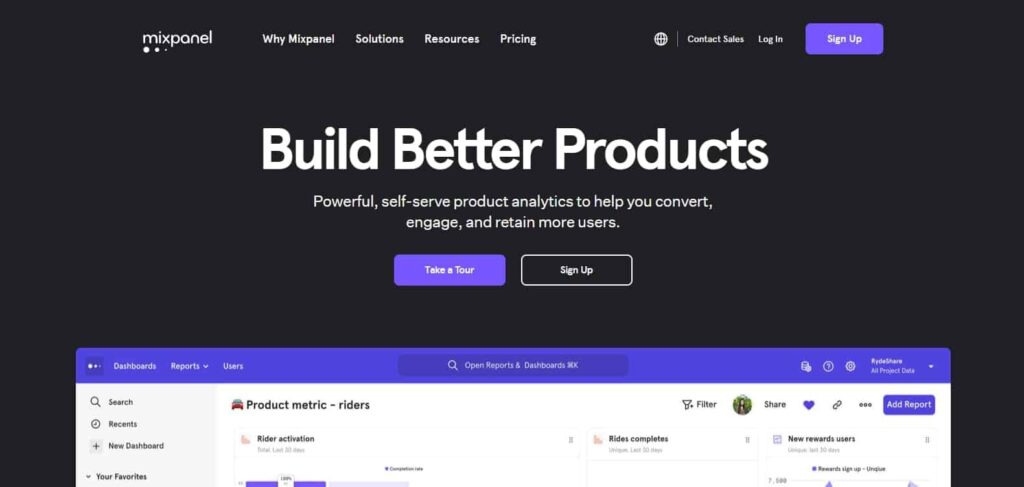
Mixpanel works similarly to Amplitude in that it also provides users with data to help them understand their businesses.
However, its main selling point is that it shows you all the information you need in a digestible manner.
For instance, the company uses interactive reports to help users process all their data.
It can also tell you which SaaS features your customers use the most and which part of your platform users usually leave and why.
Knowing this is crucial because it’ll give you a chance to fix the issues.
3. Userpilot
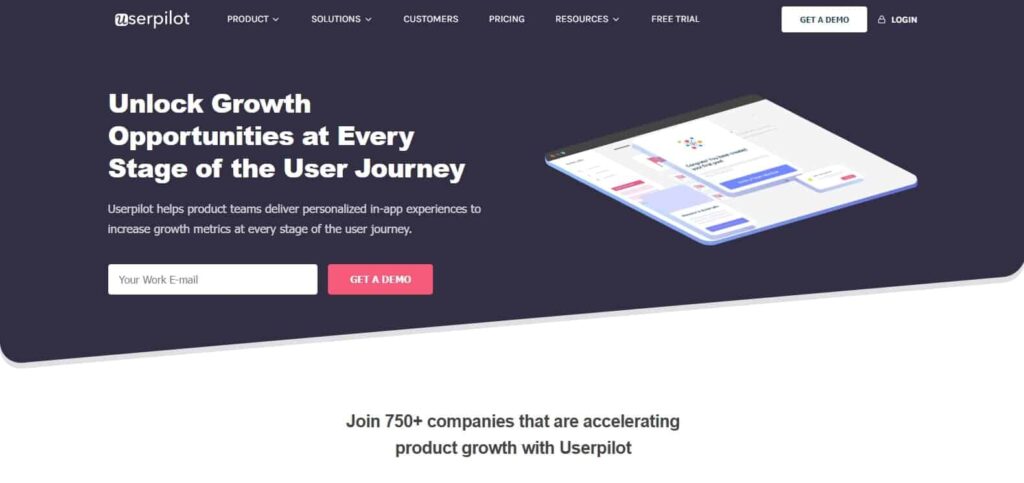
Userpilot is software that tracks your product’s growth and tells you which features your audience likes the best.
What makes this great is its ability to get qualitative data through user feedback.
You can use it to run in-app micro surveys to get user sentiment while they’re logged into the platform.
4. Semrush
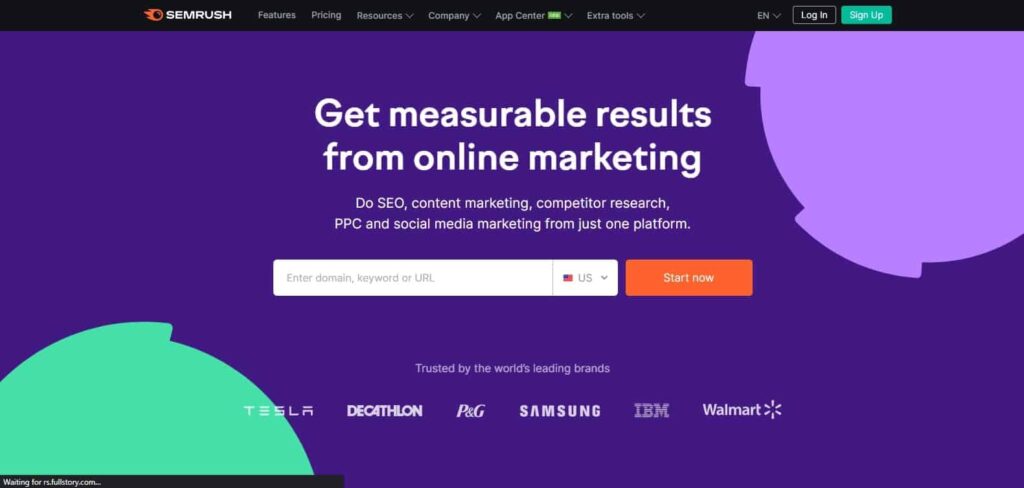
Semrush is an all-in-one SEO tool that you can use to perform keyword research and know what your rivals are up to.
It also comes with an on-page SEO tool that lets you know how you can update your site to make it more SEO-friendly.
There are other features as well that make it a must-have for SEO specialists, like link building, rank tracking, and content optimization.
5. HotJar
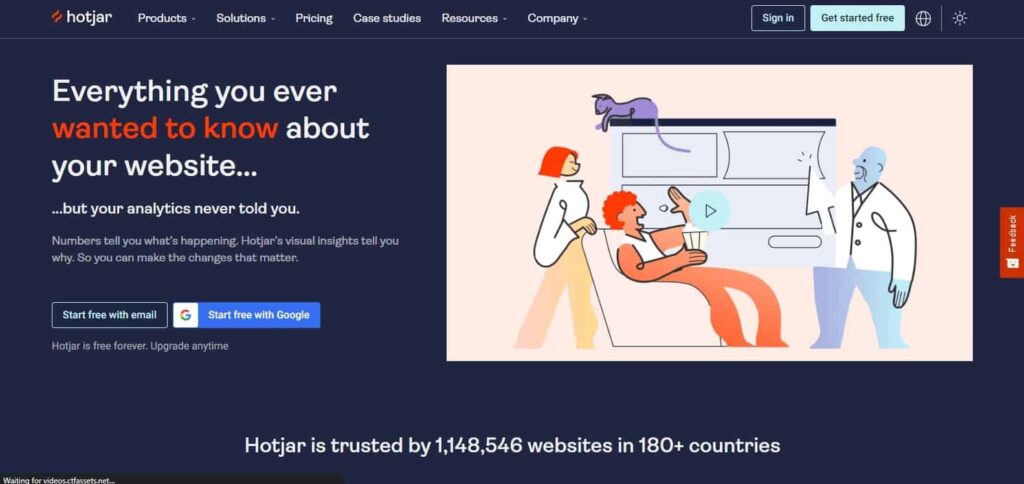
HotJar is another tool that provides you with data about your website.
It has heat maps that show you which parts of your landing pages people are interacting with the most and which parts aren’t getting any attention.
With this information, you can optimize your pages to see more conversions.
Final Thoughts About Creating a SaaS Product Marketing Plan
The step-by-step guide above should help you determine how you can create your very own marketing launch plan for your SaaS or micro-SaaS.
But if you’re still struggling with getting your SaaS product marketing plan off the ground, we at Symalite Labs are here to help.
Our years of experience have benefited products like Chatsilo, Orrderly, Vidscout, and Group Leads.
If you want us to do the same for your SaaS, reach out to us.
The video below is also a great reference for launching your micro-SaaS startup:

